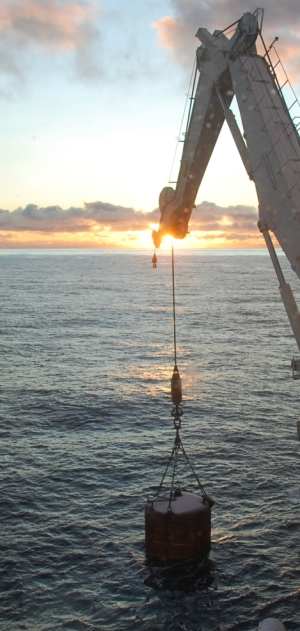
The completion of a joint industry project (JIP) to improve existing standards and regulations around subsea lifting operations has resulted in a new recommended practice (RP). The RP, developed by DNV GL, provides guidance on the proper design and correct operation, as well as regular inspection and maintenance, of subsea cranes and lifting appliances. The aim is to reduce the overall risk and safeguard personnel during lifting operations and to improve the integrity and efficiency of equipment throughout its lifetime.
Demand for subsea lifting operations is increasing and becoming more complex with more activity taking place in deeper and harsher environments, resulting in stricter lifting requirements. The rapid development of subsea cranes and lifting appliances to keep pace with the market has subsequently introduced several technical challenges around safe and efficient deployment and recovery of objects to and from the seabed.
DNV GL RP project manager Ivar Kvaleid said: "Existing standards and regulations don’t cover modern subsea lifting operations sufficiently. Subsea lifting is a complex area as it involves many technical, environmental and management aspects. This is currently defined by clients’ specifications, technological boundaries and manufacturers’ considerations, rather than regulative processes and procedures. The RP will ensure a unified safety approach and increase the overall awareness of risks from subsea lifting activities and how to best manage these risks."
The RP is applicable to lifting appliances used in subsea lifting operations. In practice, this generally means an offshore or subsea crane, an A-frame with winch or other types of winch system and covers lifting of unmanned objects. The recommendations provide guidelines on the evalution of existing lifting appliances, as well as the design and qualification of new lifting systems for subsea operations.
Challenges related to modern subsea lifting operations, such as higher lifting capacities, greater water depths and the inclusion of motion compensation systems, are covered to a lesser degree in the present industry codes.
Kvaleid added: "The objective of the RP is to provide recommendations and guidance on important aspects relating to operational parameters, risk management, related technical challenges, engineering solutions, maintenance and inspection, to ensure safe execution of subsea lifting operations."
DNV GL will be presenting the new RP to delegates at The Norwegian Society of Lifting Technology (NSLT) Subsea Lifting Operations seminar, taking place in Stavanger from 2 to 3 December. The focus of the seminar is to exchange knowledge on various challenges in marine operations involving subsea lifts.
Two other DNV GL documents will also be presented:
- DNV-OS-H205 lifting operations (VMO standard part 2-5)
- DNV-OS-H206 loadout, transportation and installation of subsea objects (VMO standard part 2-6)
These new offshore standards are part of the VMO standard that replaces the DNV Rules for Planning and Execution of Marine Operations. The new subsea lifting RP has many references to these offshore standards and can be used as a supplement in projects where the VMO standard is mandatory.

